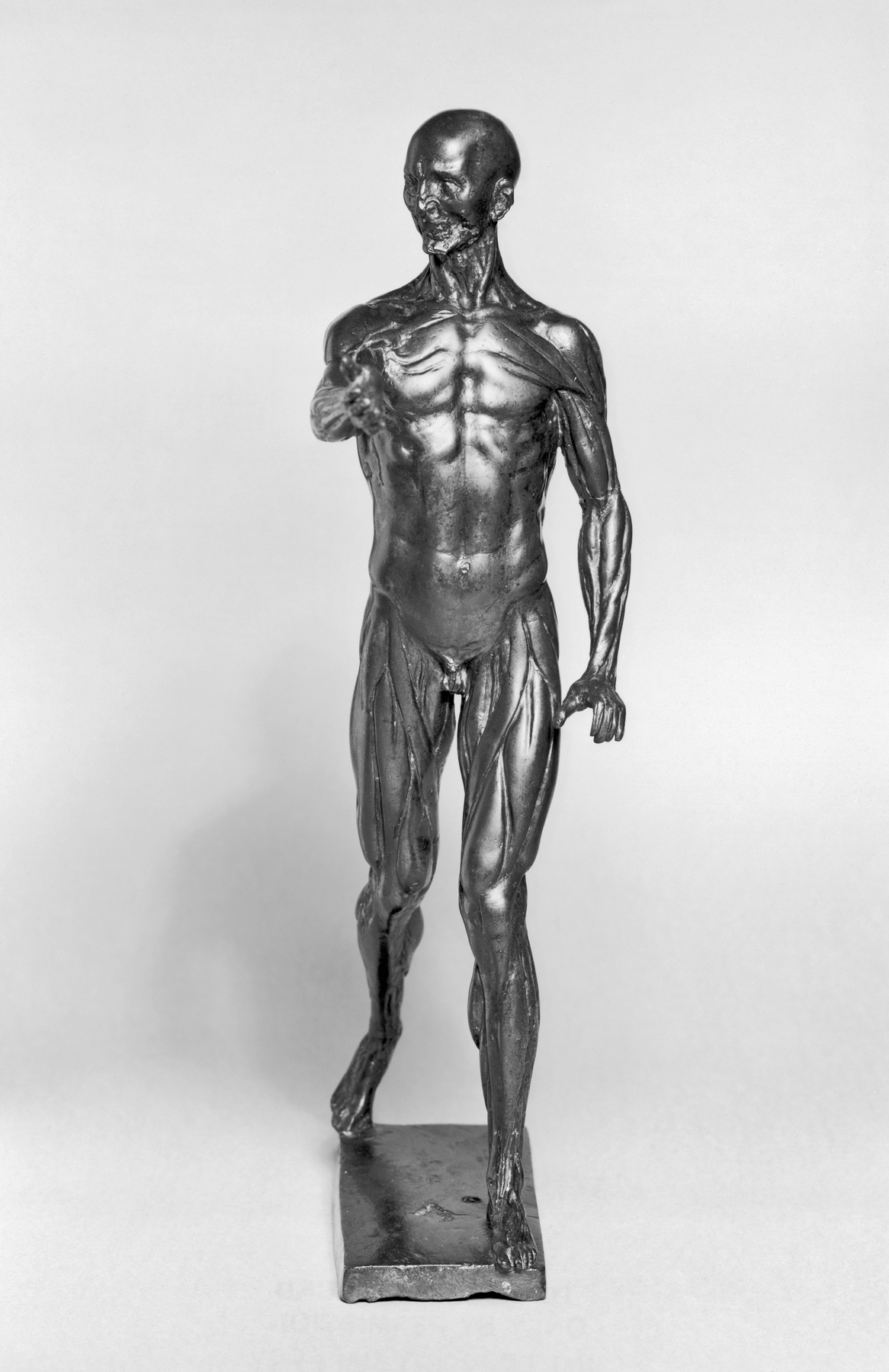Anatomical Figure of a Man
(Baroque Europe )
By the 1600s, artists who specialized in figural compositions were increasingly aware of the need to understand the structure of muscles in order to portray movement effectively. Some artists, most famously Leonardo da Vinci (1452-1519), carried out dissections. This "flayed" figure, with muscles exposed, could have served as a study object for artists. Sir Peter Paul Rubens (1577-1640) made use of a similar statuette. The representation of a dead body as if alive plays on the paradox of artists' ability to imbue with life what is inanimate.
The level of detail would have been insufficient for a medical student, for whom publications on anatomy by the Flemish physician Vesalius (photo) were more useful.
Provenance
Provenance (from the French provenir, 'to come from/forth') is the chronology of the ownership, custody, or location of a historical object. Learn more about provenance at the Walters.
Henry Walters, Baltimore [date and mode of acquisition unknown]; Walters Art Museum, 1931, by bequest.
Exhibitions
| 1964-1965 | Man: Glory, Jest, and Riddle, A Survey of the Human Form Through the Ages. Fine Arts Museums of San Francisco, San Francisco; Fine Arts Museums of San Francisco, San Francisco. |
Conservation
| Date | Description | Narrative |
|---|---|---|
| 11/1/1958 | Treatment | cleaned |
| 1/17/1961 | Treatment | repaired; loss compensation; cleaned; coated |
Geographies
Belgium, Flanders
(Place of Origin)
Italy, Florence (Place of Origin)
Measurements
H: 13 1/4 × L: 2 3/8 × D: 8 7/16 in. (33.7 × 6 × 21.5 cm)
Credit Line
Acquired by Henry Walters
Location in Museum
Accession Number
In libraries, galleries, museums, and archives, an accession number is a unique identifier assigned to each object in the collection.
In libraries, galleries, museums, and archives, an accession number is a unique identifier assigned to each object in the collection.
54.30


